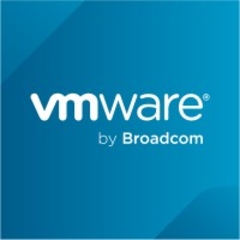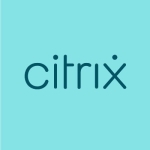What is our primary use case?
The primary use case is enterprise virtualization for server consolidation, energy conservation, data center space conservation, and overall efficiency and scalability.
The mission-critical apps we use it for are everything from machine-learning to business processing to scientific research and development.
How has it helped my organization?
We have absolutely seen a performance boost, in particular with some of our legacy applications. For some of the legacy apps, we have seen at least a 75 percent increase. In addition, some of the newer applications have also seen a boost because they're just more efficient running on VM rather than on bare metal. For the newer apps, depending on how they're optimized, the increase has been at least 10 percent.
Another benefit we have seen is the many-to-one relationship of VMs to hardware, versus one-to-one. It's a real win-win for our data center. It's a win-win for taxpayer dollars. And from a scalability point of view, we're able to rapidly scale workloads where we weren't able to do so before, working with just our pure hardware.
In addition to that, it really fits nicely into our automation efforts, where we can dramatically reduce the deployment times for applications and the services we provide.
What is most valuable?
The most valuable features for us are DRS, VMotion, and, of course, some of the analytics that we were able to define to quantify our workloads and tell us how we are able to make our data center more efficient.
It's absolutely efficient and simple to manage in general. Set it up, configure it, then monitor, manage, and maintain. That's it. What makes it simple to manage is that we use a flavor of Auto Deploy, storage policies, among other features around policies, where they come online and their policies are in them. Everything conforms to a policy. It's pretty much set up for good.
What needs improvement?
I'd like to see a little bit more integration for VDI. I think that Composer servers, security servers, broker servers with connections, I'm not sure they are necessary at this point. Perhaps they could have a lot of those functions baked directly into the hypervisor. It seems to me that if the hypervisor is scalable and flexible enough, that the processor and compute can handle all of that. Maybe we eliminate those other components for VDIs and have more mixed workloads: server workloads and desktop workloads all in the same hypervisor.
Buyer's Guide
VMware vSphere
September 2025
Learn what your peers think about VMware vSphere. Get advice and tips from experienced pros sharing their opinions. Updated: September 2025.
872,008 professionals have used our research since 2012.
For how long have I used the solution?
More than five years.
What do I think about the stability of the solution?
Having been a customer for a long time, and running this for well over a decade, stability has not been a problem. It has its nuances, it's not perfect, but stability hasn't been an issue.
What do I think about the scalability of the solution?
Scalability has been the goal all along here, to be able to meet in the middle of the scalability, horizontally and vertically. We have over 10,000 users.
How are customer service and support?
We've used technical support in the past. It was "fair" in the beginning, it's certainly better now. We don't necessarily rely too much on support now because there's such a breadth of knowledge in the community and among other customers so that everybody is connected.
How was the initial setup?
I've been involved from the beginning until the end. In the early days, before ESX, we worked with what was called GSX, or Ground Storm X. It wasn't easy, but once you got it configured it worked and it did what it was supposed to do. We didn't have any major issues.
It was all self-installed. A lot of it was a matter of reading the directions, following them, and going to "next".
What was our ROI?
One of the things I think a lot of people are inherently bad about is assuming ROI and never quantifying it. Where I am, we've done a pretty good job of quantifying over the years. We've not only studied everything down to the number of Velcro ties used but the number of cores, the cost per core for network, even power cords, and including the consumption of water.
We've been able to quantify virtualizing everything we can, instead of just assuming it, for ROI. We have been able to show quite a bit of good discipline around that. Again, on behalf of tax-payer dollars, I feel confident that with our shift to virtualization over a decade ago, we can definitely quantify our ROI. It's really simple.
Data-centers grow in a different direction now. They grow smaller and they become very dense, very lean, and that, unto itself, shows an ROI. There's really not a whole lot of assuming at this point that needs to be done. It's just there. You can quantify it very easily.
What other advice do I have?
I have recommended VMware over the at least 12 years now that I've been working directly with them and VMware's hypervisor products. I've recommended it to a lot of folks, and this goes back to the days when other players were involved; companies like Virtual Iron and Zen. VMware has always been a leader in that space and I foresee that they always will be.
Although I work in government, we are actively pursuing VMware on Cloud and we are awaiting certain certifications to help drive the initiative. At the moment we're at a standstill with that.
In over a decade, from where we started until where we are today, I would say that this solution is right around a 10 out of 10. And I can confidently say that for any customer. Even for those who are just starting up, you're working with a product that's tried and true. It didn't just come out yesterday. It's been here for a very long time.
Disclosure: My company does not have a business relationship with this vendor other than being a customer.
















